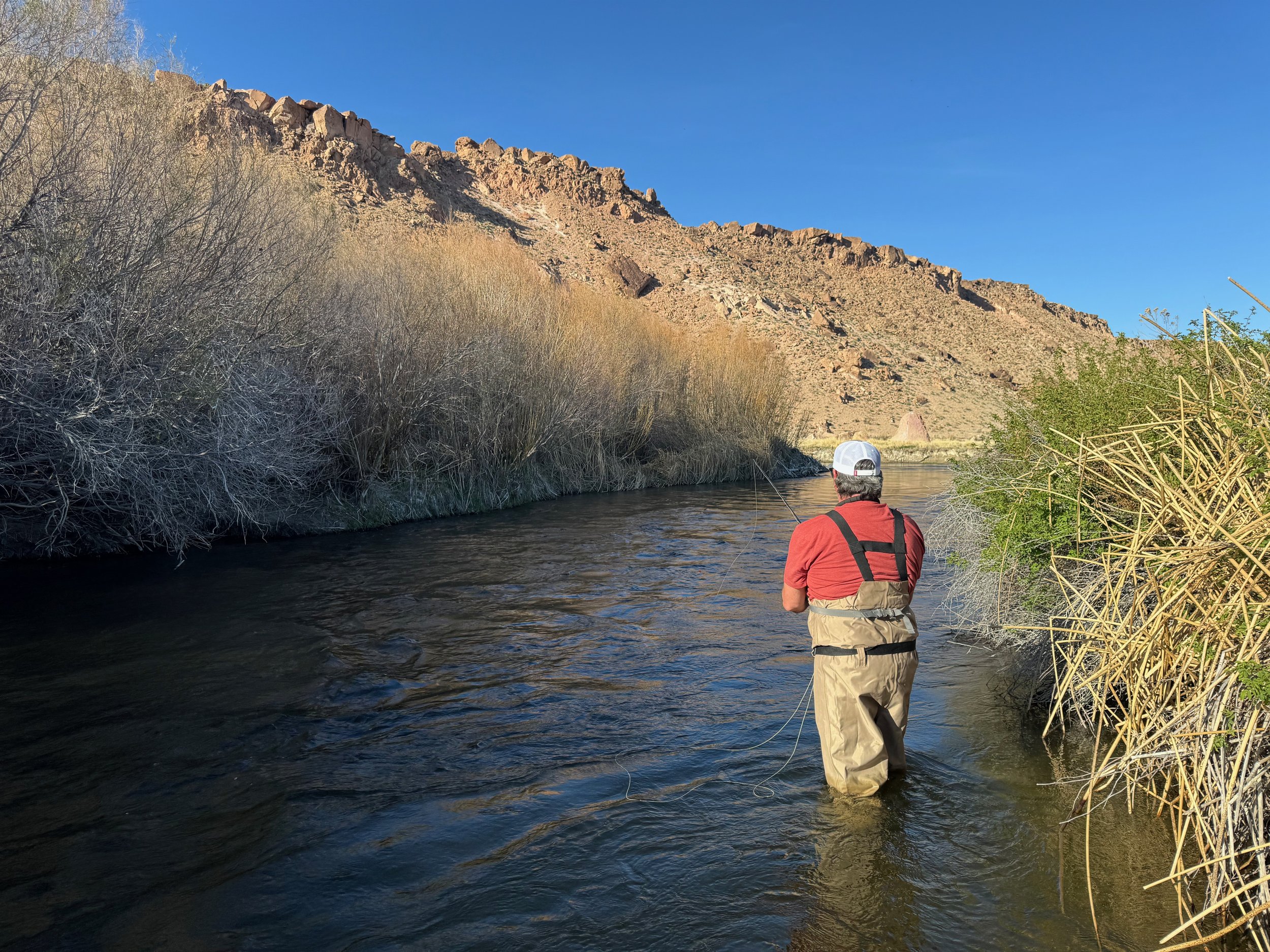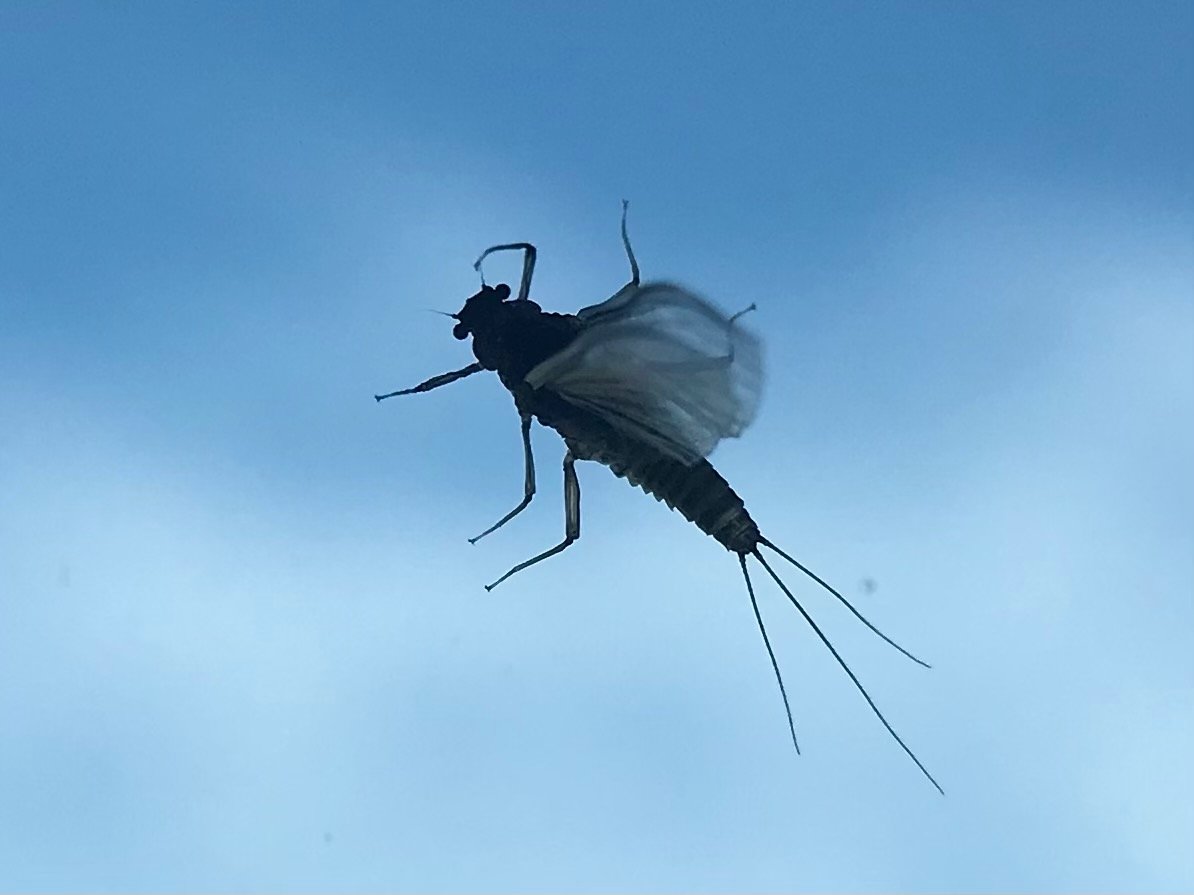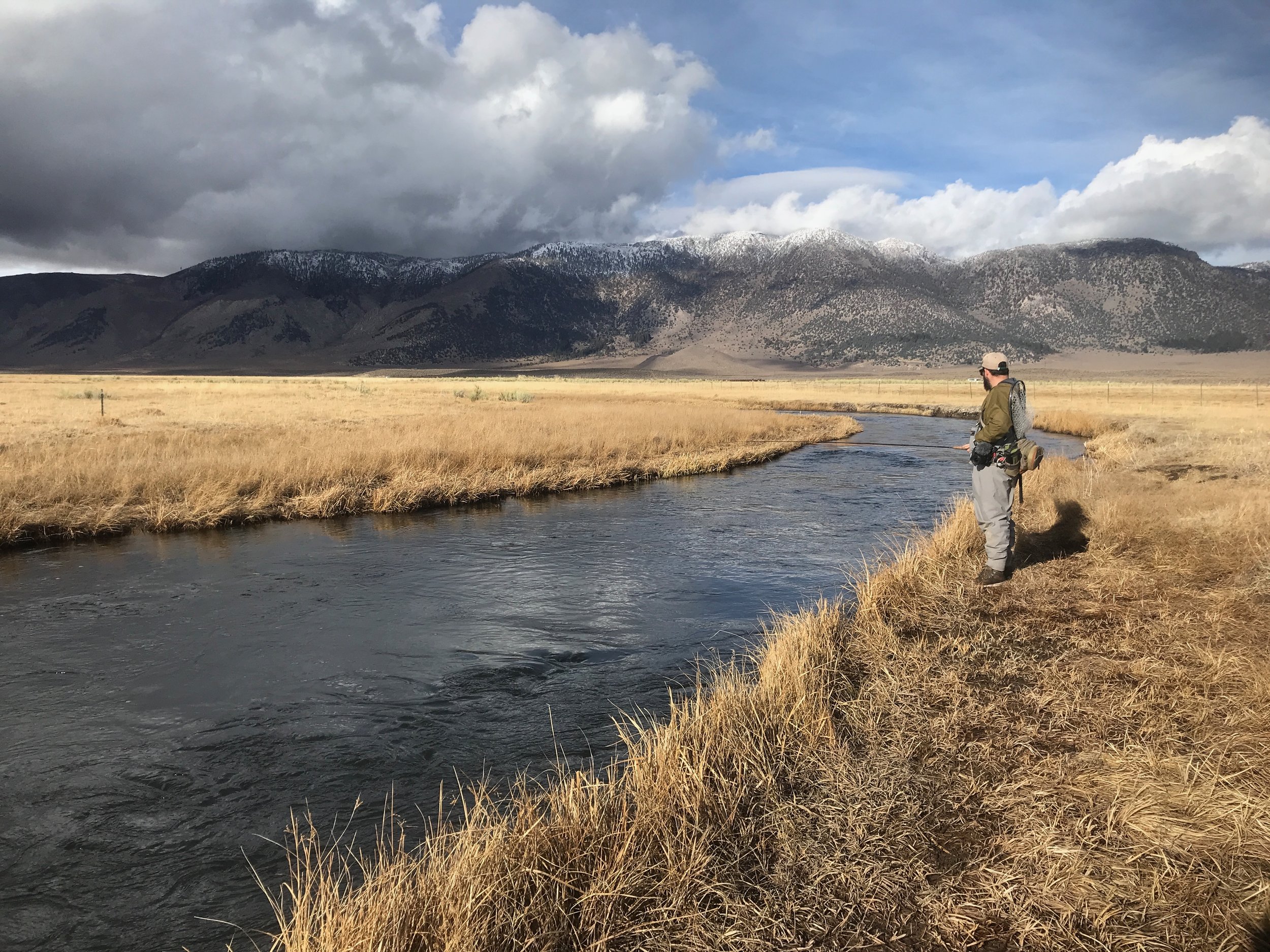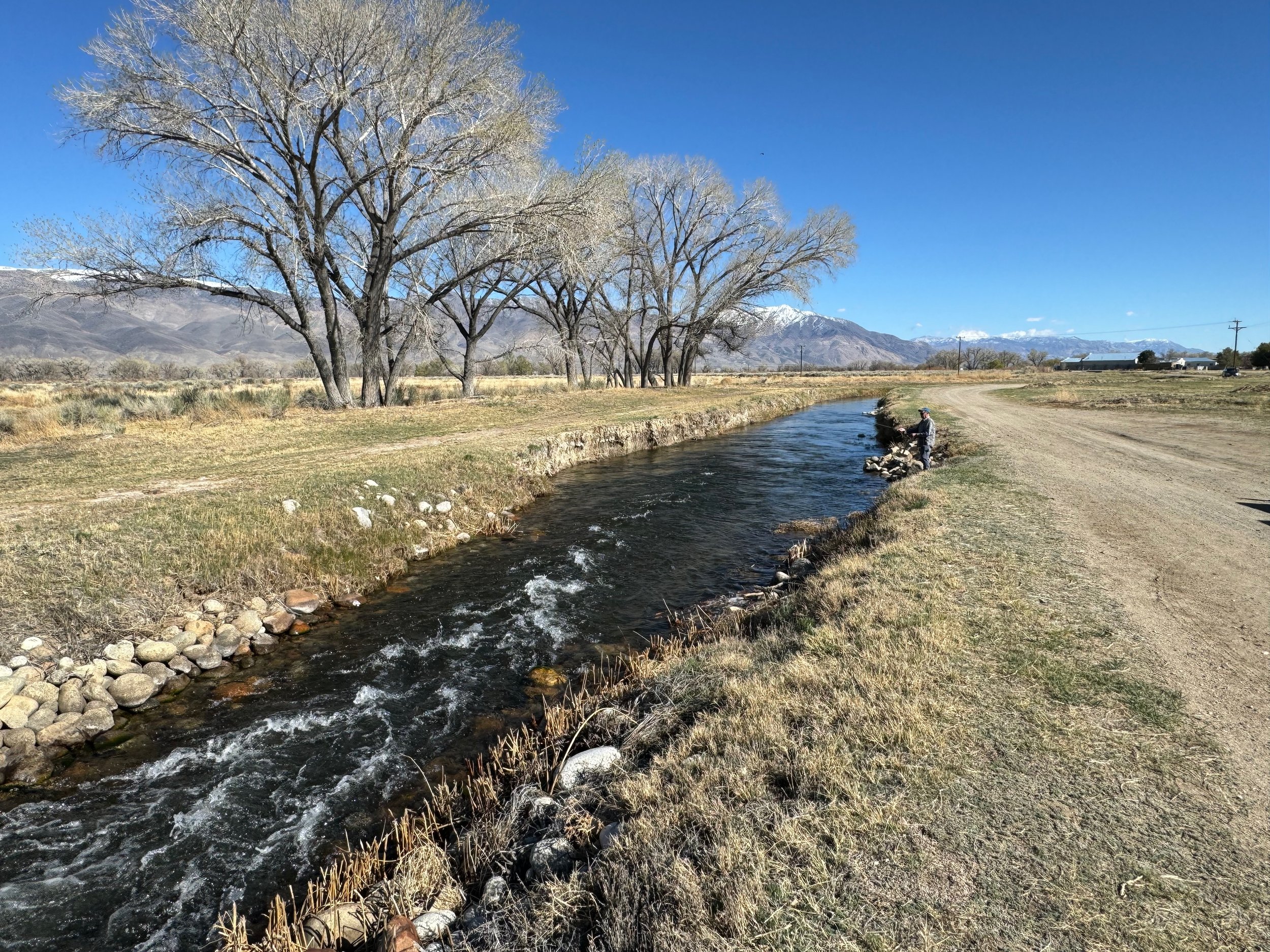Warm days are a hint of summer to come. With the warm weather comes more insect activity particularly hatches and trout feeding on the surface. Unfortunately with the warm weather comes mosquitoes. The trout are feeding on mayflies, caddis flies and midges. When the winds are not blowing spring in the Eastern Sierra is great. Nymphing continues to be the productive method of fly fishing Eastern Sierra waters.
Bishop Veterinary Hospital is now open in the old Ford Dealer on HWY 6 just north of Bishop. It will now be behind the Bishop Veterinary Hospital for fly fishing in Bishop Creek Canal.
Lower Owens River
Wild Trout Section:
Due to problems with Los Angeles Department of Water and Power Haiwee Dam project increases in lower Owens River flows will be pushed back to the end of April. This is subject to change so I would recommend checking the DWP flows on sierrabrightdot.com before heading out to the lower Owens River. Blue wing olive mayflies and caddis are hatching and the trout are feeding on the nymphs and the adults. For dry flies fish with dark brown elk hair caddis in size 18, dark brown X-caddis in size 18, dark brown CDC caddis in size 18, Adams parachutes in size 18, blue wing olive parachutes in size 18 and olive sparkle duns in size 18. For nymphs use size 16 or 18 bead head flash back pheasant tail nymphs, olive quildigons, Frenchie’s, dark brown caddis pupae, La Fontaine’s caddis pupae and Duracell nymphs.
Michael Woodfield from Las Vegas indicator nymphing the lower Owens River at 170 CFS in the afternoon after spending the morning skiing on Mammoth Mountain.
Hot Creek
Interpretive Site:
Warm weather has blue wing olive mayflies hatching and the trout are reacting by feeding on the nymphs and the adults. On the right days a size 20 Adams parachute, blue wing olive parachute and olive sparkle dun will fool the surface feeding trout. On the days where dry flies are not producing size 18 or 20 bead head flash back pheasant tail nymphs, olive quilldigons, Frenchie’s, tiger midges and zebra midges are producing the nymph feeding trout.
Mayflies hatching on Hot Creek are bringing the trout to the surface to feed on the hatching blue wing olive duns.
Hot Creek
Canyon Section:
Spring storms can leave snow on the ground, but as soon as the sun comes out the snow melts fast. All three parking areas are vehicle accessible and offering good fishing. The blue wing olive mayflies are feeding the trout and fly fishing with nymphs and dries is producing wild browns and rainbows to 16 inches. Hot Creek is shallow and working your flies around the weed beds or in the deeper depressions or holes is going to produce trout. With a dry and dropper or indicator rig I like to be three feet above the bottom fly. To imitate the blue wing olive mayflies fish with size 20 bead head flash back pheasant tail nymphs, size 20 olive quilldigons and size 16 hot spot pheasant tail nymphs for the nymphs. For the dry flies use size 20 Adams parachutes, size 20 blue wing olive parachutes and size 20 olive sparkle duns.
Working the deep holes, deep runs and cutbanks will provide resident brown trout and juvenile trout.
Upper Owens River
Above Benton Crossing Bridge:
We’re in between the trophy rainbow trout run of winter and the spring run of cutthroat trout. There are a few resident brown trout that are taking large nymphs like the size 12 stoner nymphs and the green/gold Prince nymph. There are a good number of juvenile rainbows and browns willing to take nymphs and dries. For the nymphs use bead head flash back pheasant tail nymphs, bead head flash back gold ribbed hare’s ears, olive quilldigons and hot spot pheasant tail nymphs in sizes 16 or 18. For the dries fish with Adams parachutes, elk hair caddis and blue wing olive parachutes. From Benton Crossing Road to Crowley Lake this section will open on Saturday April 27, 2024.
Steve Ebersold fly fishing Bishop Creek Canal in the afternoon with nymphs.
Bishop Creek Canal
Behind Bishop Veterinary Hospital:
With increased flows in the lower Owens River the flows in the canal have increased. The trout are feeding on tan scuds, blue wing olive mayflies and midges. There has not been enough surface activity to warrant fishing with dries. Wild brown trout and the rare hold over rainbow trout are taking tan scuds, bead head flash back pheasant tail nymphs, olive quilldigons, hot spot pheasant tail nymphs, tiger midges and zebra midges. Nymphing with an indicator or a Euro rig is the most productive technique of fly fishing Bishop Creek Canal.





